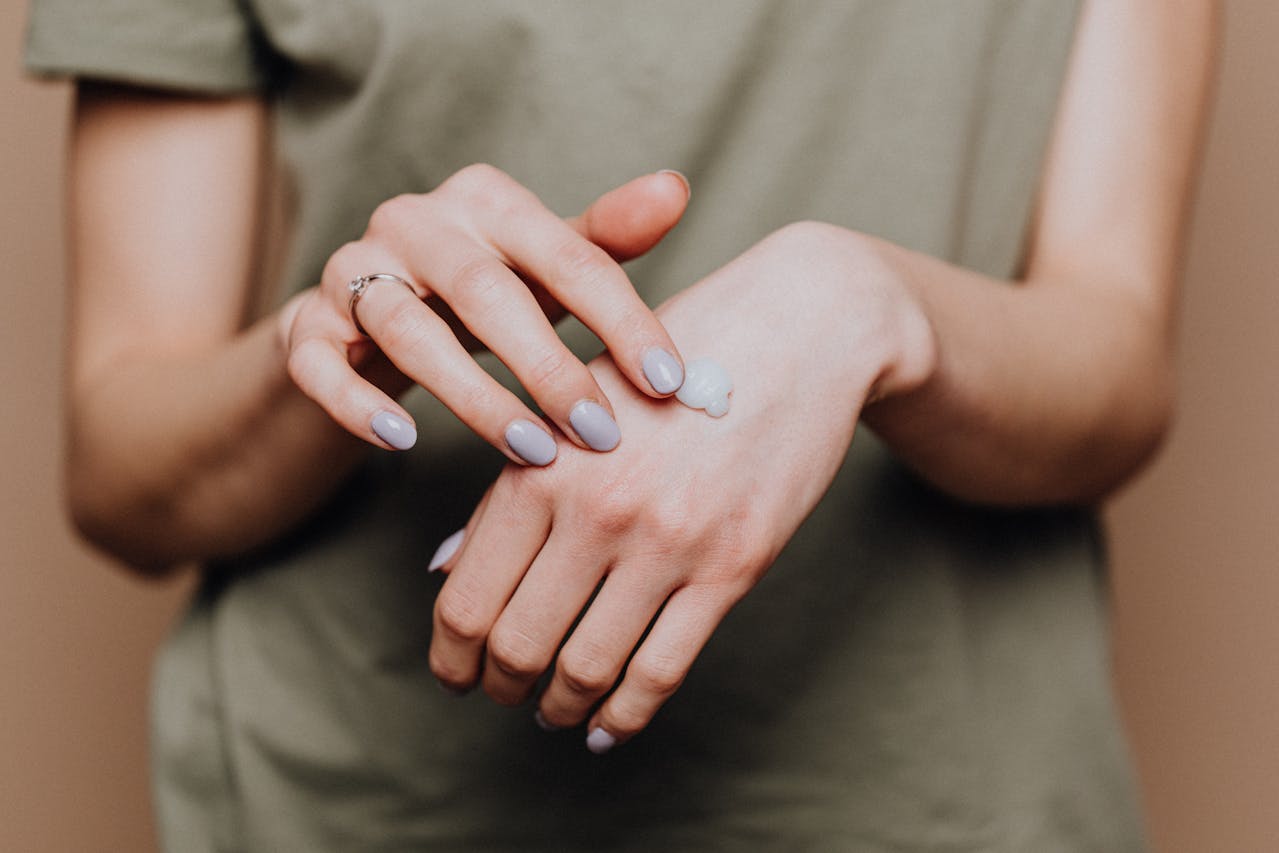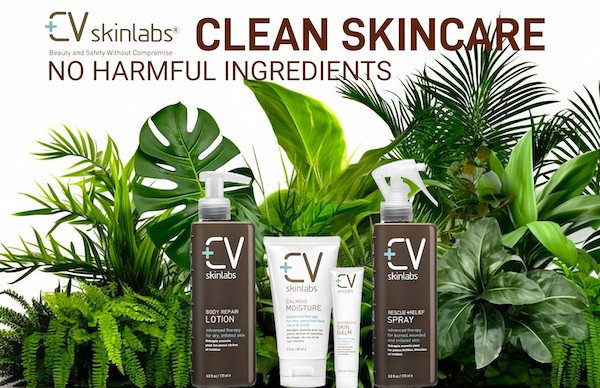
Are there microplastics in your beauty products?
This year (2024), the global theme for Earth Day is “planet vs. plastics.”
EarthDay.org is calling for “the end of plastics for the sake of human and planetary health,” demanding a 60 percent reduction in the production of plastics by 2040.
Here at CV Skinlabs, we are an eco-conscious company. We work hard to do our part to protect you and the planet. We care deeply about what you put on your skin and what those ingredients can do to the earth. Our products are always free of harmful and toxic ingredients.
We’re also committed to the continual improvement of mindful sourcing and packaging. Our packaging is recyclable, and we print our brochures on the inside of our boxes to help save resources. In an ongoing effort to reduce virgin plastic, we are working towards using post recycled materials (PCR), in our packaging.
We also strive to increase awareness of plastics in cosmetic products. Of particular concern are small components called “microplastics,” as these are difficult to filter out in wastewater treatment plants. That means they can more easily reach water courses and drain into the oceans where they may be consumed by marine animals, plankton, and other biota, negatively impacting the entire food chain.
What can you do to help cut back on the dangerous proliferation of plastics and microplastics when it comes to your beauty products? We have some ideas below.
What are Microplastics?
Microplastics are small plastic pieces less than 5 millimeters long that can be harmful to the ocean and aquatic life. They are the most prevalent type of marine debris found in the ocean and the Great Lakes.
The problem with microplastics is that they do not readily break down into harmless molecules. They can take hundreds or thousands of years to compose, and in the meantime, cause damage to the environment. They have been detected in marine life from plankton to whales, in commercial seafood, and even in drinking water in some locations.
Microplastics come from two general sources:
- Larger plastics that have fragmented and degraded over time
- Intentionally made microplastics found in commercial products like cosmetics, detergents, paints, medicines, and more
Microplastics used to be added to some cosmetics in the form of microbeads. These were used to help exfoliate and cleanse, and you were likely to find them in body washes and toothpaste. In 2015, President Obama signed the Microbead-Free Waters Act of 2015, banning these microbeads in cosmetics and personal care products.

Photo by Valentin Antonucci via Pexels.
Microplastics Are More Than Microbeads
Though most cosmetic manufacturers have now eliminated the use of microbeads in their products, many still have microplastics in their formulas.
That’s because “microplastics” is a broad category. In addition to including dangerous microbeads which have now been phased out, it can also include “synthetic polymer substances that are persistent, bioaccumulative, and toxic,” according to the organization, “Beat the Microbead.”
Polymers are simply large molecules made by chemically linking a series of building blocks. All plastics are made up of polymers, but not all polymers end up as plastics.
When they are used in personal care and beauty products, polymers are the building blocks for some key ingredients. They may come in liquids and gels (rather than beads, for instance). Some polymers swell in water and can act as binders that hold the ingredients together. They can also be used as thickeners in shampoos, conditioners, and lotions so that they flow more easily out of a bottle.
Manufacturers have been using synthetic polymers for a long time to do the following:
- Prevent an emulsion from separating into its liquid and oil components—keep it nicely mixed together
- Form a thin film on the skin, hair, or nails, such as in a conditioner or lotion
- Set hair, add volume, and protect it from moisture
As to whether liquid and gel polymers such as these are as toxic as solid forms, we still need more research to know for sure. In the meantime, many consumers feel safer purchasing products that avoid these ingredients.
What Microplastics Are Most Toxic?
Beat the Microbead has come up with a list of more than 500 microplastic (synthetic polymer) ingredients “that are widely used in cosmetics and personal care products.”
That’s a bit overwhelming! Plus, we lack the research we need to know exactly which of these ingredients may harm the environment or human health.
Beat the Microbead has created a list to help consumers determine which of their products are safest to use, based on the inclusion of certain types of microplastics.
Red
These products have been found to contain synthetic polymers that are commonly considered to be microplastic ingredients. They include but are not limited to the following:
- Polyethylene (PE)
- Polypropylene (PP)
- Polymethyl methacrylate (PMMA)
- Nylon (PA)
- Polyurethane
- Acrylates Copolymer
Orange
These products contain synthetic polymers that Beat the Microbead has termed “skeptical microplastic.” That means there is not enough information available to know how toxic they may or may not be.
- Poloxamer
- PEGs
- PPGs
- Certain types of polyquaterniums
- Liquid polymers
- Soluble polymers
Green
Products on the green list do not contain any ingredients from the red and orange lists. They may not be free of all microplastic ingredients, however.
Zero
Products on this list are entirely free of ingredients from the red and orange lists. They also carry the “Zero Plastic Inside” certification logo because their manufacturers have declared them entirely free of microplastic ingredients.
How To Tell if Your Products Contain Microplastics
As we have long recommended here at CV Skinlabs, the first thing you want to do is turn the product over and read the ingredient list. If you see ingredients like those on the red list above—particularly polyethylene, polypropylene, and polymethyl methacrylate—then you know that the product contains microplastics.
The problem is that these products are so pervasive in our world. If we all used them only now and then, the impact would be lower. But think about how many beauty and personal care products may be in your house right now, then multiply that by the entire population, and you can see why we have a problem.
You can do your part by avoiding products with these ingredients as much as possible. In addition to reading the ingredient list, you can also purchase your products from conscientious companies like CV Skinlabs with products that are free of harmful ingredients like microplastics.
Did you know about microplastics in beauty products?
Featured image by Karolina Grabowska via Pexels.



